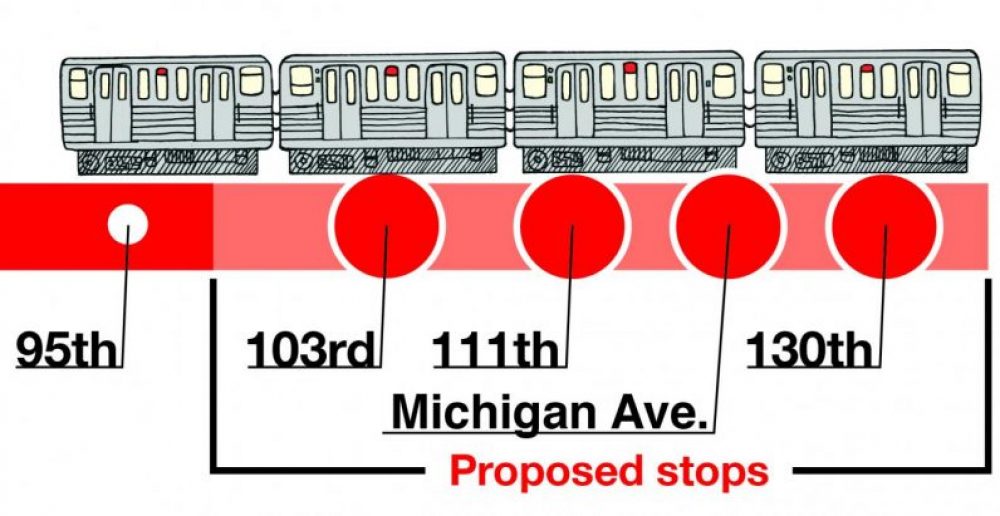As students of Professor Lou Turner’s Community Engagement in Planning class at the University of Illinois at Urbana-Champaign, we developed a community engagement plan to increase the visibility of the Red Line Extension (RLE), the $2.3 billion-dollar proposed extension of the Chicago Red Line’s current 95th street stop to 130th street, through a total of four new stops (103rd, 111th, 115th/Michigan Avenue, and 130th). The RLE is expected to increase access to jobs and provide local resources through transit-oriented development throughout the Greater Roseland Area in the far South Side of Chicago, which includes the community areas of Roseland, Pullman, West Pullman, Morgan Park, and Riverdale. This development is also advantageous to commuters all over Chicago and the Northeastern Illinois region. Our project aimed to revitalize the Red Line Extension by engaging Chicago’s youth as stakeholders and creating an online presence for the RLE using digital technologies and social media.
In undertaking the process of revitalizing the Red Line Extension through engaging Chicago’s youth, we started by studying earlier practices of community engagement and development. Our studies ranged from planning theories and methods to documents from community organizations and planning agencies supplemented by firsthand accounts from Professor Lou Turner, who has been involved with the RLE since 2002. To further understand the context of this project we visited the 95th street and proposed station stops and engaged with community stakeholders including the Endeleo Institute at Trinity Church, which supports community economic and workforce development, and the TCA Clinic, which offers health and mental health care to the residents of Altgeld Gardens near 130th street, where it is located, as well as residents throughout Chicago. We also met with the planning agencies CMAP (Chicago Metropolitan Agency for Planning), the CTA (Chicago Transit Authority), and CDOT (Chicago Department of Transportation). During these meetings, we discussed the timeline of the Red Line Extension, relevant issues such as gentrification and jobs, current and future engagement and outreach plans, and the impacts and involvement of young people.
Next, we began the process of bringing young people’s voices into RLE advocacy and planning by engaging with high school students in a Civics Class at Gwendolyn Brooks College Preparatory Academy, located near the proposed station stop at 111th St. We administered a survey to gauge students’ transportation practices, experiences with and feelings toward public transportation, social media use, and knowledge about the RLE. We then met with about 50 students through Zoom, a video conferencing platform, and presented information about the RLE and urban planning and engaged students in live polls and discussions around issues relevant to the RLE, community mapping, and social media.
Finally, we constructed supplemental materials with activities geared towards establishing conversation between stakeholders for the utilization of the youth’s input. A memorandum and ‘RLE Social Justice Planning Guide’ were provided to Brooks students and their Civics teacher Dr. Warren, detailing the background of the RLE, the results of the survey, live polling, community mapping exercises, a detailed list of civic engagement organizations relevant to the RLE that young people can get involved with, and a set of RLE- and civic engagement-related social media activities that can be used in or out of the classroom. We also created this website and a Twitter account to organize a centralized digital hub for disseminating RLE information and documenting our engagement efforts. We shared our engagement project with The Chicago Transit Authority (CTA), the planning agency responsible for moving the RLE forward, with the hope that young people will be included in the planning process and that their visions will shape the Red Line Extension going forward.

